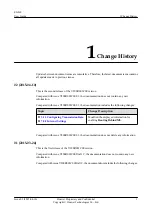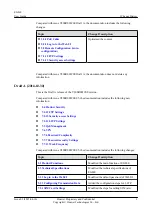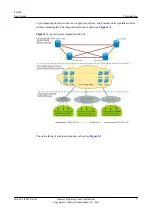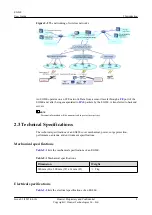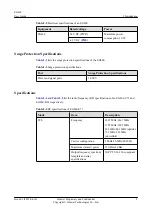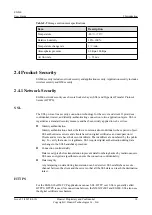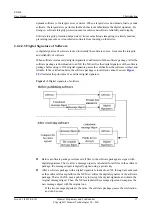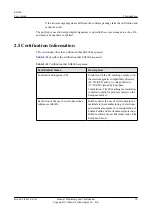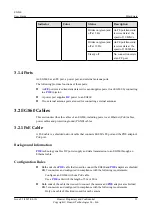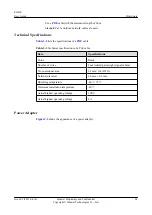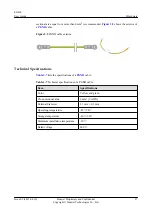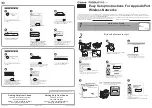
Table 2-9
Storage environment specifications
Item
Description
Temperature
-40
℃
~+70
℃
Relative humidity
10%~100%
Temperature change rate
1
℃
/min
Atmospheric pressure
62 Kpa~106 Kpa
Air flow rate
≤
55 m/s
2.4 Product Security
EG860 security includes network security and application security. Application security includes
wireless security and OM security.
2.4.1 Network Security
EG860 network security uses Secure Sockets Layer (SSL) and Hypertext Transfer Protocol
Secure (HTTPS).
SSL
The SSL protocol is a security connection technology for the server and client. It provides a
confidential, trusted, and identity-authenticating connection to two application layers. SSL is
regarded as a standard security measure and has been widely applied to web services.
l
Identity authentication
Identity authentication checks whether a communication individual is the expected object.
SSL authenticates servers and clients based on digital certificates and user/password.
Clients and servers have their own identifiers. The identifiers are numbered by the public
key. To verify that a user is legitimate, SSL requires digital authentication during data
exchange in the SSL handshake procedure.
l
Connection confidentiality
Data is encrypted before transmission to prevent data from being hacked by malicious users.
SSL uses encryption algorithms to ensure the connection confidentiality.
l
Data integrity
Any tampering on data during transmission can be detected. SSL establishes a secure
channel between the client and the server so that all the SSL data can reach the destination
intact.
HTTPS
For the EG860, the OM TCP applications can use SSL. HTTP over SSL is generally called
HTTPS. HTTPS is used for connections between the NMS/WebUI and EG860. SSL also uses
the digital certificate mechanism.
EG860
User Guide
2 Introduction
Issue 02 (2015-04-10)
Huawei Proprietary and Confidential
Copyright © Huawei Technologies Co., Ltd.
14


